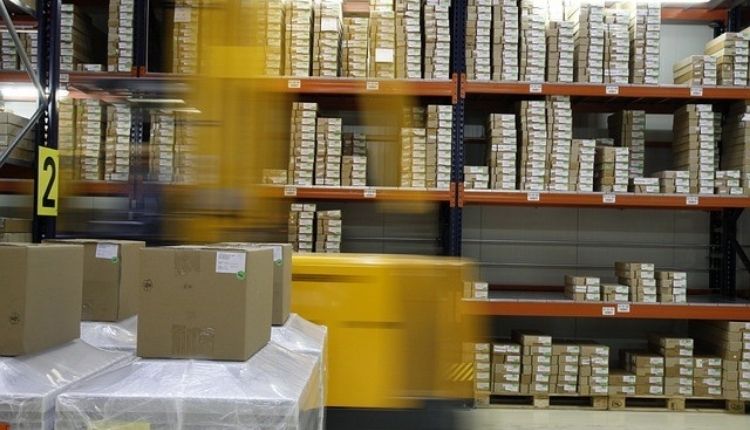Are you a new business owner struggling to manage your inventory? Or perhaps you’ve been at it for years but still haven’t figured out how to avoid your warehouse turning into an organized mess every three months? Well, whatever the case, let us help you figure out some better, more effective ways to organize your warehouse.
Efficient warehouse organization is essential for any business that deals with inventory management. It is crucial for streamlining operations, increasing productivity, and reducing costs.
With the ever-evolving landscape of logistics and supply chain management, it’s crucial to stay ahead of the curve and make the most of available technology and strategies. Optimizing warehouse operations is crucial to ensure efficiency, cost-effectiveness, and customer satisfaction.
As we step into 2023, the ever-evolving landscape of warehousing brings forth new challenges and opportunities. To stay competitive and meet the demands of the modern market, businesses must adapt and embrace innovative ways to organize their warehouses effectively.
This article explores ten practical ways to better organize your warehouse in 2023 to enhance productivity, reduce errors, and improve overall efficiency. Whether you’re looking to reduce costs, improve productivity, or enhance customer satisfaction, these proven approaches will guide you toward greater success in your warehouse operations.
Mastering Warehouse Organization: 10 Innovative Strategies for 2023
1. Implement Advanced Warehouse Management Systems (WMS)
Warehouse Management Systems (WMS) are sophisticated software solutions designed to streamline and enhance the operations of a warehouse or distribution center. In 2023, these systems have advanced significantly to incorporate cutting-edge technology and offer a wide range of features and benefits.
Modern WMS integrates with IoT, AI, and machine learning to offer real-time tracking and visibility into your inventory. These systems streamline order processing, reduce errors, and optimize the allocation of resources, leading to enhanced organizational efficiency.
Warehouse Management Systems are powerful tools for warehouse and distribution center operators. As the business world continues to evolve, these advanced WMS systems are essential for keeping up with the demands of modern supply chain management.
2. Maximize Vertical Storage
Utilizing vertical storage space remains a timeless strategy to maximize your warehouse’s storage capacity. It is a key component of warehouse organization and efficiency, as it allows you to make the most of the available space within your facility.
With advancements in racking and shelving systems, you can now optimize space utilization efficiently. Vertical storage solutions such as tall racks and automated retrieval systems help you store more goods in the same footprint. You can also install custom stainless steel shelving to better fit your needs and maximize storage output.
3. Embrace Robotics and Automation
Robotics and automation have been transformative forces in warehouse organization, and their significance continues to grow in 2023. These technologies offer numerous benefits, improving efficiency, accuracy, and productivity in the warehousing industry.
Automation in warehouses is a trend that continues to gain momentum. In 2023, you can expect more affordable and sophisticated robotics to assist with tasks like picking, packing, and even material handling. This not only speeds up operations but also reduces the risk of human errors.
4. Employ RFID Technology
Radio-frequency identification (RFID) technology is more accessible and reliable than ever. By tagging items with RFID labels, you can improve inventory tracking and reduce the time spent on manual counting and data entry. RFID technology can provide real-time information on stock levels, making it easier to organize and restock your warehouse efficiently.
5. Optimize Slotting
Optimizing slotting in your warehouse is a strategic process that involves determining the most efficient locations for storing your products based on various factors, such as their size, demand, and handling requirements. This process is crucial for enhancing warehouse organization and operational efficiency.
You need to figure out suitable locations for your products based on their size, demand, and handling requirements. Sophisticated software can help you analyze your product data and automatically assign optimal storage locations, reducing unnecessary travel and increasing picking efficiency.
6. Prioritize Sustainable Storage Solutions
Sustainability is a growing concern for businesses in 2023. You can better organize your warehouse by adopting eco-friendly storage solutions, such as reusable and recyclable pallets and containers. Sustainable practices not only improve organization but also appeal to environmentally conscious customers and partners.
7. Implement Demand Forecasting
Accurate demand forecasting is crucial for maintaining an organized warehouse. In 2023, AI-driven predictive analytics can help you anticipate demand fluctuations and seasonal trends with greater precision. This enables you to allocate resources effectively and optimize your inventory management.
8. Enhance Employee Training and Engagement
Enhancing employee training and engagement is a critical aspect of better organizing your warehouse in 2023. Your workforce is the backbone of your warehouse operations, and their knowledge, skills, and motivation play a pivotal role in maintaining organization, ensuring efficiency, and reducing errors.
Your warehouse’s organization heavily relies on your workforce. Start investing in comprehensive training programs and offer incentives to keep employees engaged and motivated. A well-trained and motivated team can considerably improve the overall organization of your warehouse.
9. Implement Quality Control Checks
To maintain a well-organized warehouse, it’s essential to implement strict quality control checks. Leveraging technology like computer vision and automated quality control systems can help identify and eliminate defective items before they enter the inventory, reducing waste and improving the overall organization.
10. Continuous Improvement and Adaptability
In a rapidly changing business environment, the key to maintaining an organized warehouse in 2023 is adaptability and a culture of continuous improvement. Regularly review your processes, technology, and strategies to stay ahead of the competition and ensure your warehouse remains organized and efficient.

